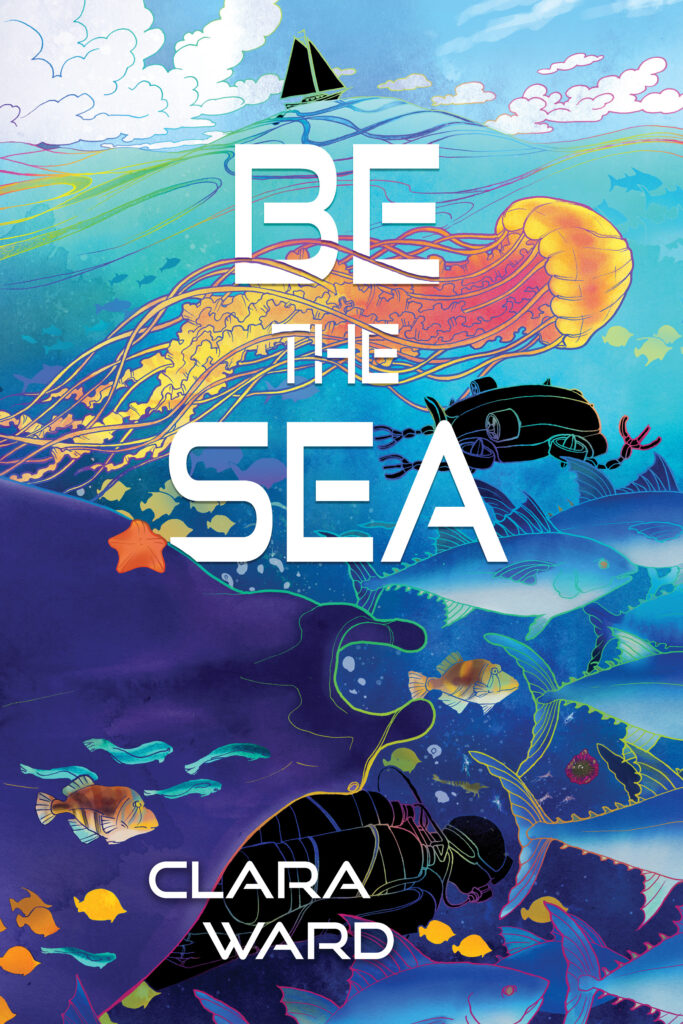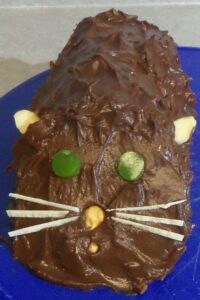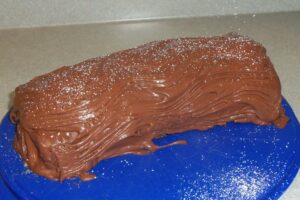 As someone who works deeply in the zoo/conservation industries and spends a lot of time pretending to be a tiger at conventions around the country, you might say I’m enthusiastic about animals.
As someone who works deeply in the zoo/conservation industries and spends a lot of time pretending to be a tiger at conventions around the country, you might say I’m enthusiastic about animals.
You’d be wrong, of course.
I’m zealous in my love for them. If I could be a little shield-carrying furry paladin, I would. (In fact, I play one in a homebrewed Dungeons and Dragons campaign.) I could go on and on about the why””because as an autistic person I relate to critters more, because there’s always something new to discover about “˜em, because they’re just badass””but the point is this”¦
I love writing about them. I love reading about them, especially in fictional settings. Whether they live in a Societyâ„¢ or still bolt from men with guns, they’re fascinating. Yet I’ve found that most “talking animal” tales out there are for kiddos. Y’know: Redwall, Peter Rabbit, and the like.
If you’re like me””in the furry fandom or furry-adjacent, or just someone who admires the natural world and takes inspiration from it””you may want to know how to go about writing anthropomorphic animal characters for adults.
There’s two things you gotta consider when you’re writing anthropomorphic animals for an adult tale:
- Unless you’re specifically looking to write an allegory, you have to actively avoid making your species and characters allegorical or symbols or stand-ins for something. It’s rather patronizing at best and can get offensive at worst. (FYI, we’re not dealing with allegory in this post.)
- At the same time, you don’t want to be self-indulgent and make all your characters, like, hyenas just because it’s cool, as much as I totally understand the compulsion. (Did you know that spotted hyenas may have critical thinking skills on par with chimpanzees?)
So, in short””don’t use your animals as overwrought symbols if you’re not trying to tell a story that way, but also, at the same time, ensure your animal characters feel authentic and purposeful in the story.
Sound confusing? Paradoxical? Yeah, I get it.
It comes down to this: use the real-life differences between animals and ourselves to explore whatever themes, aesthetics, relationships, etcetera you want in your writing.
Examples:
- African lions (Panthera leo) have a complex social structure. Related females live together and share one to four related males; these males, most of the time, prefer to stay on the outskirts of the territory to protect it. Male cubs, and sometimes female cubs, leave the pride after a certain age. What kind of stories can you tell about family, home, and love with anthropomorphic lions?
- Virginia opossums (Didelphis virginiana) famously “˜play dead’ as a defense mechanism. What kind of society would develop around a race or culture that involuntarily goes limp at the drop of a hat?
- Numerous insects go through an intermediate pupa stage before emerging as an adult. In an anthropomorphized world, is this transformation celebrated? Feared? Is it spiritual or magical? How do insect civilizations work, knowing that a part of their young population is, at any time, inert inside of a cocoon etcetera?
You get the picture, I think.
Essentially? Just treat your anthropomorphic animal characters as you would any other fantasy species you’re putting together. Tell stories that require animal characters. It’ll all work out…which I’m sure is easier said than done, else I wouldn’t have to write this post at all.
And so! My tips to find inspiration for your anthropomorphic characters and portray them in a sincere, intelligent manner”¦
First, do your research on the animals you want to scribble about. Non-fiction research, naturalistic research. Go to the zoo and stare; watch documentaries twice, once with the sound on and once with the sound off. Try to avoid folklore or myth as it can lead you into allegory, although giving your animal-folk these beliefs as a part of their culture can create a multilayered narrative. Magic’s a pretty awesome use for animal-based misconceptions, too: no, it isn’t true that goldfish have a five-second memory, but maybe they’re masters at amnesia-based magic.
Second, remember, still, to have fun. I outlined a lotta DO NOT in this post, but there’s a lotta DO. Do imagine interesting cultural, magical, and spiritual reasons for why animals do that weird thing. Do tell stories in space and in kingdoms, in dystopias and in alternate dimensions. Do give your animals diverse personalities, ways of thinking, ways of being. Do breathe empathetic life into creatures that most folks don’t even think about.
And do write about animals that talk, for grown-ups like you and me. Whether your critters walk on two legs or four (or have wings), you’ve got it in you to create a fantastic, genuine story that just happens to feature wolves and tigers and boars at its center.
Before I head out, here’s a few books and other pieces of media that I feel present really thoughtful anthropomorphic animal characters:
- Watership Down by Richard Adams. Adams’ rabbits aren’t just fuzzy humans””they have their own beliefs, their own culture, their own limitations, most of which are based on how wild rabbits truly act. Adams did his research. (He got some of it wrong, but hats off to the dude. This book is enthralling and creepy.)
- Barsk: The Elephants’ Graveyard by Lawrence M. Schoen. Sci-fi with anthro elephants. It really doesn’t get much better than that…or much more creative!
- Juan DÃaz Canales and Juanjo Guarnido’s Blacksad comics. Detective noir with animal characters. The universe has a history that parallels our own””the comics deal with the post-WWII era””but each species has a culture, has a personality.
- Fudoki by Kij Johnson. Kind-of a cheat on this list, as the cat protagonist temporarily turns into a human, but it’s wonderful for its depictions of cat culture (and medieval Japanese culture, too!).
- Disney’s Zootopia. It’s a movie, yes, and it’s for kids, yes, and it leans a little into allegory, yes, but the crew behind the film put thought into what a consolidated society of mammals would look like. Prey animals find predator animals a little unnerving; bunnies can’t be cops, because they’re not bulky like elephants or polar bears; trains need different-sized compartments for everything from hamsters to giraffes. The story and the universe feels purposeful.
About the Author:
 Chelsea “Little Bean Tiger” Eckert (she/her) is a graduate of UNC Greensboro’s MFA program, as well as a zoo worker, furry, and fantasy fiction fan. A nonbinary writer, she happily babbles about queerness, anime chicks, and her love of binturongs to anyone who will listen. She’s proud to be the sometimes-haggard but always-cheery Communications Director of Atlanta’s MultiverseCon. You can find her either 1) at your local furry con running animal quiz shows, 2) spamming the Multiverse Slack with memes only she finds funny, or 3) on Twitter (@chelseayrbff).
Chelsea “Little Bean Tiger” Eckert (she/her) is a graduate of UNC Greensboro’s MFA program, as well as a zoo worker, furry, and fantasy fiction fan. A nonbinary writer, she happily babbles about queerness, anime chicks, and her love of binturongs to anyone who will listen. She’s proud to be the sometimes-haggard but always-cheery Communications Director of Atlanta’s MultiverseCon. You can find her either 1) at your local furry con running animal quiz shows, 2) spamming the Multiverse Slack with memes only she finds funny, or 3) on Twitter (@chelseayrbff).
If you’re an author or other fantasy and science fiction creative, and want to do a guest blog post, please check out the guest blog post guidelines. Or if you’re looking for community from other F&SF writers, sign up for the Rambo Academy for Wayward Writers Critclub!
#sfwapro







 Note from Cat: I’m so pleased to see Be The Sea out in print. I read an early version and it’s a lovely book. Please pick it up or request it through your local library!
Note from Cat: I’m so pleased to see Be The Sea out in print. I read an early version and it’s a lovely book. Please pick it up or request it through your local library!

 Clara Ward lives in Silicon Valley on the border between reality and speculative fiction. Their latest novel,
Clara Ward lives in Silicon Valley on the border between reality and speculative fiction. Their latest novel, 

